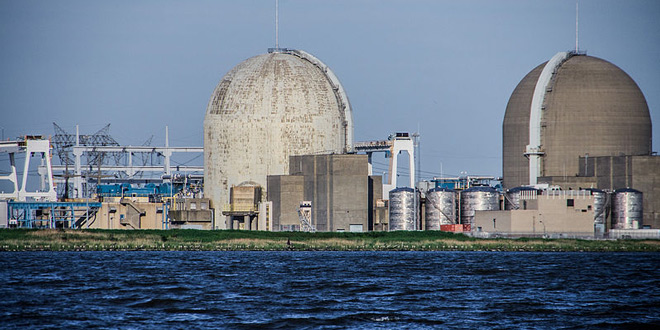By Suzanne Herel
The PJM Board of Managers has suspended the controversial Artificial Island transmission project pending a “comprehensive” staff analysis to be completed by February, at which time it will decide a course of action, CEO Andy Ott said in a letter to stakeholders Friday.
“It has become evident to all involved that the projected costs to resolve the problems at Artificial Island have increased significantly. PJM has been examining alternatives in an attempt to offset some of the increases,” Ott wrote. “In addition, questions have arisen about whether the currently proposed solution would perform as intended without further expense. Because of these concerns, PJM has come to the conclusion that a pause in the project is necessary before any new financial obligations are incurred by the project developers.
“In light of the current uncertainties around the changing scope and configuration of the project, it is imperative that we understand the basis for any alternatives that may exist to manage the operational issues at Artificial Island.”
This is the second time the board has overturned the stability project — PJM’s first competitive solicitation under Order 1000.
Initially, PJM planners recommended awarding the work to Public Service Electric and Gas, but the board reopened bidding to finalists following protests from spurned bidders, state officials and others. (See PJM Board Puts the Brakes on Artificial Island Selection.)
PSE&G, one of three entities eventually designated to build a 230-kV transmission line from the New Jersey nuclear complex under the Delaware River to Delaware, said Friday it was “committed to working with PJM and will provide PJM with any information and support they request.”
LS Power’s Northeast Transmission Development, picked to construct the transmission line, said Friday it was “disappointed” by the board’s action.
“The modeling errors in question do not relate to Northeast Transmission’s designated portion of the Artificial Island project and Northeast Transmission was not involved [in] the associated modeling activities,” it said. “Northeast Transmission was surprised by the PJM board’s decision, as Northeast Transmission had received no indication prior to the announcement from PJM on Aug. 5 that PJM had any concerns with PJM’s or PSE&G’s modeling of the system protection and control upgrades.”
Pepco Holdings Inc., chosen to work with PSE&G on the project, did not immediately respond to requests for comment.
The board approved the stability fix for the complex that houses the Salem and Hope Creek nuclear generators last summer. But in April, PJM revealed that PSE&G’s portion of the project — which the RTO initially pegged at $137 million — had nearly doubled to $272 million once the transmission owner completed a detailed analysis. (See Artificial Island Cost Increase Could Lead to Rebid.)
“PJM conducted a preliminary estimate regarding the interconnection to Salem,” a PSE&G spokeswoman said Friday. “We then conducted a detailed, design-level analysis of the interconnection to Salem. We had not previously prepared a detailed estimate for Salem because our proposal would have terminated in Hope Creek.” (See PSE&G Defends Artificial Island Cost Increase.)
The sticker shock prompted PJM planners to consider other alternatives, including terminating the line at Hope Creek.
“However, in reviewing this alternative, an issue arose related to one of the other components of the project: that is, whether proposed system protection and control upgrades would perform as intended,” Steve Herling, PJM’s vice president for planning, said in a letter to stakeholders Friday. “Specifically, PSE&G identified an error related to the modeling of circuit breaker clearing times associated with those upgrades. The effect would be a reduction in the margin of stability provided by those upgrades, regardless of any alternatives to the transmission solution under review, requiring further steps and expense to correct.”
In an informational filing with FERC submitted Friday, PJM said, “By virtue of this suspension, all designated entities are placed on notice to cease incurring any new financial obligations on the Artificial Island project until PJM completes its analysis and the PJM board has made a subsequent determination based on that analysis.”
The cost allocation of the project, the lion’s share of which would be charged to customers on the Delmarva Peninsula, led the governors, legislators and consumer advocates of Delaware and Maryland to oppose it. (See Del. Lawmakers Try to Block Artificial Island Plan; Project Still on Track.)
In June, FERC agreed to rehear its order approving the use of the solution-based distribution factor (DFAX) cost allocation method for the project. (See FERC Taking a Second Look at Cost Allocation for 2 PJM Projects.)
Neither of the letters PJM sent out Friday mentioned the cost allocation controversy.
Delaware Gov. Jack Markell released a statement commending the PJM board for its action.
“This decision is one that the state of Delaware welcomes,” he said. “The project as it was proposed would have placed an unjust burden on the state, resulting in higher electric rates for our consumers and businesses. I hope that upon further review, a more equitable solution can be identified.”
Bob Howatt, executive director of the Delaware Public Service Commission, said the agency was still analyzing the board’s decision.
“It seems like the political and economic concerns may have succeeded in stopping what has been called the most efficient and cost-effective solution because PJM and FERC have failed to address the cost allocation issue,” he said, adding that the decision seemed “totally unfair” to LS Power.
Howatt said he worried what effect the suspension would have on the desire of independent transmission companies to participate in the Order 1000 process.
“If I were an independent transmission company, why would I waste a lot of time on a project that could get overturned?” he said. “I just see it chilling the competitive transmission market that FERC has been attempting to create.”



